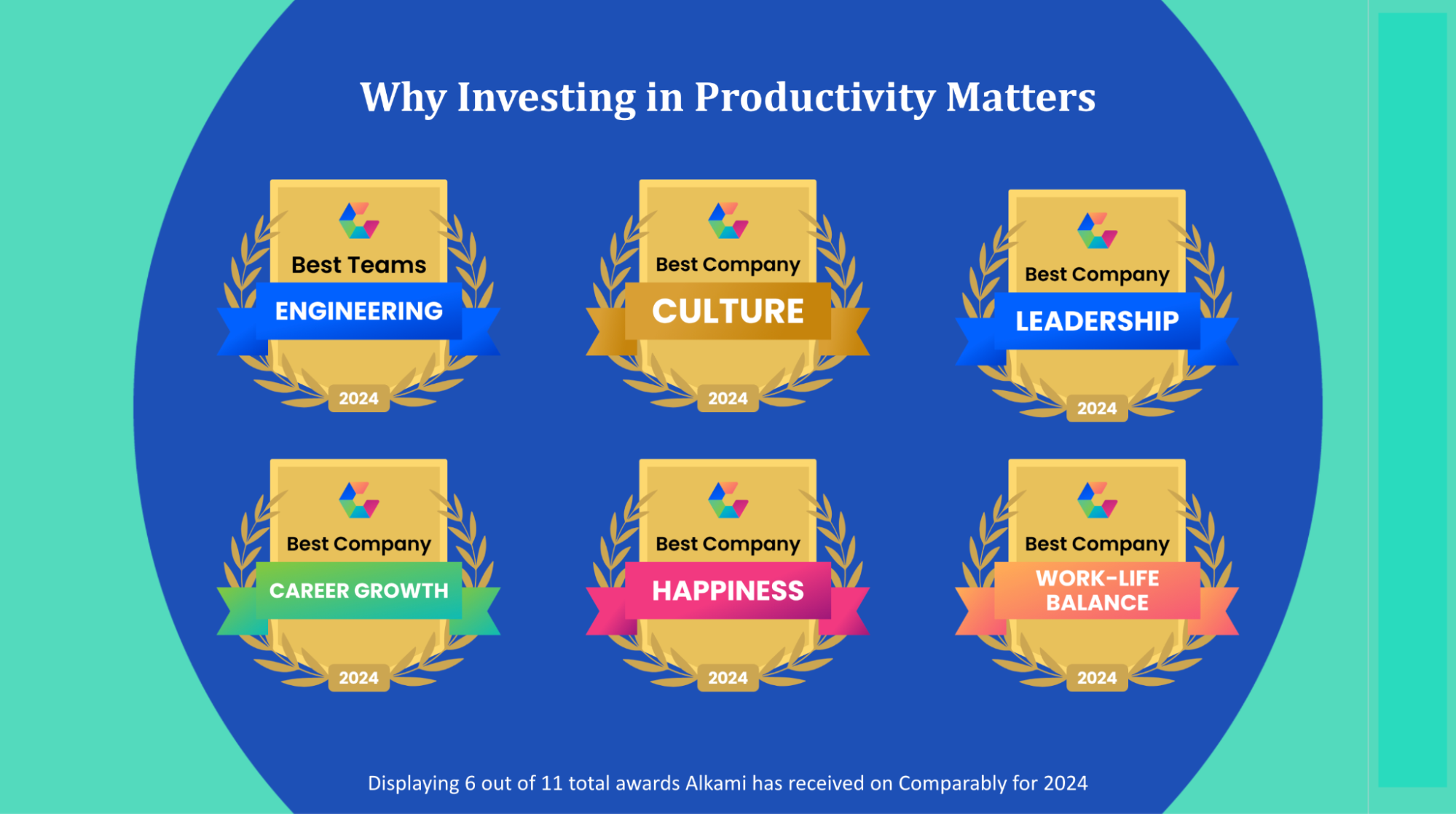Learn how we turn technology management into business excellence with KPIs, audits, and frameworks that keep operations running smoothly.
Running technology at scale isn’t just about writing great code, it’s also about operating with the same discipline and clarity as any high-performing business unit. At Alkami, we’ve built a model that keeps our teams aligned, efficient, and focused on what matters most. In this blog, we’ll take you behind the scenes into the “engine room” of our digital banking platform, sharing how we use technical business reviews, capacity audits, and the right mix of metrics, tools, and frameworks to stay on course. Along the way, you’ll get a look at the strategies that keep our operations humming and discover practical takeaways you can apply to your own organization.
Shifting from code-centric to business-centric
Technology organizations often pride themselves on their ability to build, ship, and maintain complex systems. But today, the most successful technology teams no longer define success solely by velocity or uptime. Instead, they run their groups like high-performing business units, aligning productivity with business outcomes such as revenue generation, and operational efficiency.
To thrive, we had to move beyond code and embrace business-driven key performance indicators (KPIs) and frameworks that directly link technology operations to enterprise value.
If your goal is to boost productivity and better align technology with business strategy, begin with three steps.
Step 1: Develop a clear strategy
Every transformation begins with strategy. We first asked ourselves: What does productivity mean to our business? To some, it meant efficiency–getting more done with fewer resources. To others, it meant effectiveness, achieving greater impact with the same inputs. Both are valid, but conflating them can lead to missed opportunities.
Take support agents as an example; the following is a hypothetical scenario, not a direct stat from our support staff. Imagine one agent closes 40 tickets a day with canned responses (efficient), while another resolves 25 tickets thoroughly, reducing repeat contacts (productive). The latter contributes more to long-term success, even though output is lower. That distinction reframed how we set goals across our teams.
We also leveraged historical data, industry benchmarks, and internal case studies to confirm hypotheses. By grounding our approach in evidence, we created alignment between our technology roadmap and the organization’s broader strategy.
Step 2: Determine the right metrics
The next step was to select key performance indicators (KPIs) that capture outcomes rather than just outputs. Instead of simply counting features shipped, we emphasized measures like successful product launches, financial institution retention, and employee satisfaction. I recommend these as valuable metrics for financial institutions to consider – Alkami takes a similar approach by balancing both quantitative and qualitative measures.
- Quantitative: Cycle time, throughput, account openings per employee.
- Qualitative: Employee well-being, collaboration effectiveness, innovation sentiment.
By choosing actionable KPIs and continuously refining them, we ensured that measurement served as a catalyst for improvement, not a vanity exercise.
Step 3: Incorporate tools and frameworks
Metrics on their own are not enough–they need structure. That’s why we are adopting the SPACE framework.
A comprehensive productivity measurement model that evaluates software development teams across five dimensions: satisfaction and well-being, performance, activity, communication and collaboration, and efficiency and flow.
This framework evaluates developer productivity across five dimensions:
- Satisfaction & well-being: How employees feel about their work and tools.
- Performance: Outcomes of delivery, such as reduced loan processing times.
- Activity: Team-generated actions and artifacts, like accounts opened per month.
- Communication & collaboration: How effectively people work across teams.
- Efficiency & flow: How smoothly work gets done with minimal disruptions.
Increasing activity without measuring satisfaction can drive burnout. Likewise, boosting efficiency without collaboration can create silos. The SPACE framework gave us balance.

Why this matters
Transforming technology operations with business-driven KPIs requires both reporting numbers, as well as shifting mindsets. At Alkami, this shift created new behaviors, fostered cultural alignment, and reframed how we think about scale and speed.
The impact extends beyond productivity:
- Happiness: Employees feel more connected to purpose.
- Career growth: Clearer metrics help managers support development.
- Work-life balance: Measuring satisfaction normalizes healthy workloads.
- Connection with leadership: KPIs provide transparency and trust.
- Culture: Teams rally around shared definitions of success.
As Harvard Business Review notes, “efficiency is about doing the same with less. Productivity is about doing more with the same.” The distinction has allowed us to unlock not just faster delivery, but more meaningful outcomes.

Key takeaways
If you’re looking to boost productivity and align technology with business strategy, start with three steps:
- Develop a clear strategy: Revisit your business objectives, define what productivity means, and ensure your KPIs ladder up to organizational goals.
- Determine the right metrics: Balance quantitative and qualitative indicators, avoid vanity metrics, and prioritize actionable insights.
- Incorporate tools and frameworks: Use structured frameworks like SPACE to measure productivity holistically and avoid tunnel vision.
The journey requires iteration and intentionality, but the payoff is significant: stronger alignment, higher employee satisfaction, and a technology organization that operates as a well-oiled business unit.









